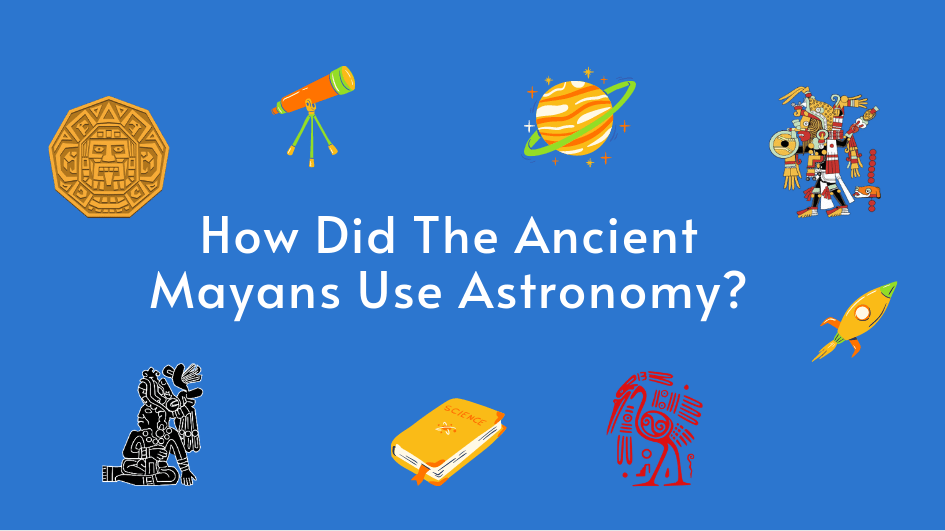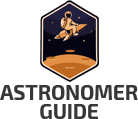Mayans have been passionate about astronomy but have you ever wondered how the ancient Mayans have been studying astronomy without the complex and developed tools that we have nowadays? They dedicated their lives to astronomy to make sure they interpreted the sky and thus gods’ will. Even their buildings were shaped and constructed to help them study astronomy.
How could they interpret every feature of the sky with ancient tools? How could they succeed in making a lot of astronomy achievements? All these questions and more will be answered in this article.
Contents
Mayans and Astronomy
Since the Mayans believed that the gods left messages and communicated through the stars and planets. They seldom make life-changing decisions without consulting back to astronomy. For example, they wouldn’t start a war when a god is not visible in the sky, and they will not ascend a king to a throne until a particular planet is in place.
The Maya believed that the Earth was the focal point of the universe, and every celestial object, fixed and did not move. The stars, moons, Sun, and planets were divine beings to them, and they interpreted and deciphered their motion as divine beings going between the Earth, the underworld, and other heavenly regions. The Mayans believed that Celestial beings were incredibly associated with human lives. Thus they dedicated a lot of time to observing these constellations intently so they could make their decisions accordingly.
To the Mayan people, it was indispensable, foreseeing the unlimited patterns of nature, life, demise, and resurrection that were crucial for agricultural and nomadic people. It was not something new that the Mayans observed the constellations to outline the seasons, similarly to the majority of the world’s extraordinary societies. They made their very own calendar, attempting to always produce precise estimations and times.
Mayan calendar
The Mayans’ astronomy was related to spiritual beliefs and esoterica and divine service, yet this can’t conceal their perceptions’ profound level of precision and the numerical refinement expected to devise their intricate arrangement of calendars.
The Mayan calendar is the most puzzling of all of the Mayan commitments to astronomy in their studies and is one of the best Mayan astronomy achievements, a complicated means of interlocking cycles that keep track of time considerably more precise than our own new and advanced calendar. This intricate and mathematically accurate calendar framework powered a large part of the New Age sentimentalism encompassing the Mayans.
The Maya did not only have one calendar; they made two main ceremonial calendars. The first calendar was a bit vague and used different units of time that were based on the solar year (Haab) of 365 days. It was divided into 18 months of 20 days, each with a final 5-day month. The second, however, was a calendar consisting of the 260-day called the Tzolkin cycle split into 13 months with 20 days each. After every 52 years, both cycles align.
Mayans chose to make their months to be containing 20 days is because they used the Vigesimal Numeral System, also used by the Aztecs, which is a twenty-based system contrary to our numeral system that is a ten decimal numerical system. And even though with their accurate mathematical calculations, they knew very well that the year was not precisely 365 days long, they decided to ignore that to have a 20 day month based on their Vigesimal Numeral System
Watch this video for more information.
The Mayans have utilized both calendars by interconnecting them and giving exact dates. Understanding the calendars might appear complex and challenging to process for us, yet the shaman priests and astronomers of the Mayan civilization comprehended it flawlessly.
There was also a third calendar called the Long Calendar. This calendar was a long-term calendar that starts from day zero, which is equivalent to the 13th of august 3114 BCE in the Gregorian Calendar, and it was divided into different parts representing different cycles of 20, 60, 7 200, 144 000, and 1 872 000 that were based on the Haab (solar year of 365 days). The Great Cycle, which is the latest period, consisted of 5125.25 years. And that’s where the predictions of the world ending in 2012 (which approximatively coincide with the end of the Great Cycle) came from. Because the Mayans did believe that the Great Cycle would end in a catastrophe and disaster.
Watch this video for more information.
What Instruments have the Mayans used for their astronomy research?
The Mayans didn’t have any complicated tools to help them determine the movement and places of celestial constellations, and thus they have only relied on the naked eye for their observations. They might have utilized simple and primitive tools, for example, to chart celestial objects and their disposition; they have used crossed sticks.
However, Ancient Mayans were very limited by the instruments they had. For instance, they did not have the luxury of working with the armillary circles or sextants as the other civilizations.
Mayan Mythology and its relation to the astronomy
The Sun and Kinich Ahau
The Sun was one of the most highly significant stars of the old Maya civilization. Kinich Ahau was the Sun God of the Mayans. He was one of the more remarkable and essential divine forces of the Mayan pantheon.
Many antique Mayans have claimed that there was somehow a descended dynasty from the God of Sun himself which they believed that he was a part of Itzamna, the father and ruler of the universe and a creator of the world. Kinich Ahau would take the form of the Sun and sparkle in the sky the entire day, and then he would polymorph himself into a jaguar at night time to go into the Mayan underworld called Xibalba.
And because they were eager to learn every message and will of Kinich Ahau. They have pledged to study every move of the Sun, and that is how they became adept at foreseeing and understanding the solar phenomena like the equinoxes, eclipses, and solstices. And predicting when the Sun will get to its apex.
However, many old Mayans also believed that both the Sun and the Moon are two demigods heroes called Hunaphu and Xbalanque who can transform themselves. Their story is featured in the Popol Vuh, a council book which is the most sacred and essential book of the Quiche Maya.
Moon
The Moon has also had a paramount significance to the Mayan people, as important as the Sun was to them. Mayan priests broke down and anticipated the Moon’s developments with incredible precision. Likewise, they have believed that they belonged to a Mayan dynasty that was a descendent of the Moon.
Generally, the Moon in Mayan mythology was associated with either a rabbit or an old maiden. This powerful Goddess of the Moon called Ix Chel was the Goddess of fertility and childbirth. Some say that there was another Goddess of the Moon called Ix Ch’up, very youthful and pretty. Others believe that Ix Ch’up was Ix Chel when she was younger. She would fight every day with the Sun God Kinich Ahau and would force him to descend to the underworld at night, even though he was powerful himself.
They have built a unique observatory specifically for charting the movement and development of the Moon on an island called Cozumel.
How Has The Astronomy Affected the Way of Life of the Mayans?
Architecture
Astronomy had a massive effect on the architecture of the Mayan civilization. For illustration, they have built palaces, observatories, pyramids, ball courts, and even temples in a particular way that would make celestial constellations such as the stars, planets, Moon, and the Sun be viewable from the roof of the building or through windows at special events throughout the year. And many buildings were constructed in a way to be aimed at summer solstice or equinoxes.
And since Venus was the most important planet to Mayan people, they have aligned the doorways and windows with either the northerly or southerly rising of Venus.
Many observatories have been discovered at many archaeological excavations of Edzna and Chichen Itza. One particular observatory at Xochicalco was built underground with an opening in the roof, which had a vast Mayan influence. The hole was designed in a way so the Sun will shine through it in the summer and will be straight at the top on the 15th of May and 29th of July.
Venus and War
The most significant planet to the Maya civilization was Venus, which they connected with war. War would be sorted out to correspond with the positions of Venus, and only when Venus was visible in the sky would they sacrifice the soldiers caught in battles. And that’s why they were focusing on the movement of Venus. However, they looked at Venus as if it was rotating around the Earth, not the Sun., and that’s how they have recorded that its year was 584 days long.
Stars and Agricultural
To the Maya, the stars were not as crucial as the Venus, Sun, or Moon to their mythology. But, they were essential to agricultural seasons. The stars shift occasionally and were utilized by Mayan space experts to anticipate when the seasons would go back and forth, which was necessary for agrarian reasons. For instance, they mark the coming of the rain when the Pleiades appear in the sky since the ascent of the Pleiades in the sky happens at about the very time that it starts to rain in the Mayan areas.
If you liked the article, try reading about Why And How Did The Ancient Egyptians Use Astronomy?


